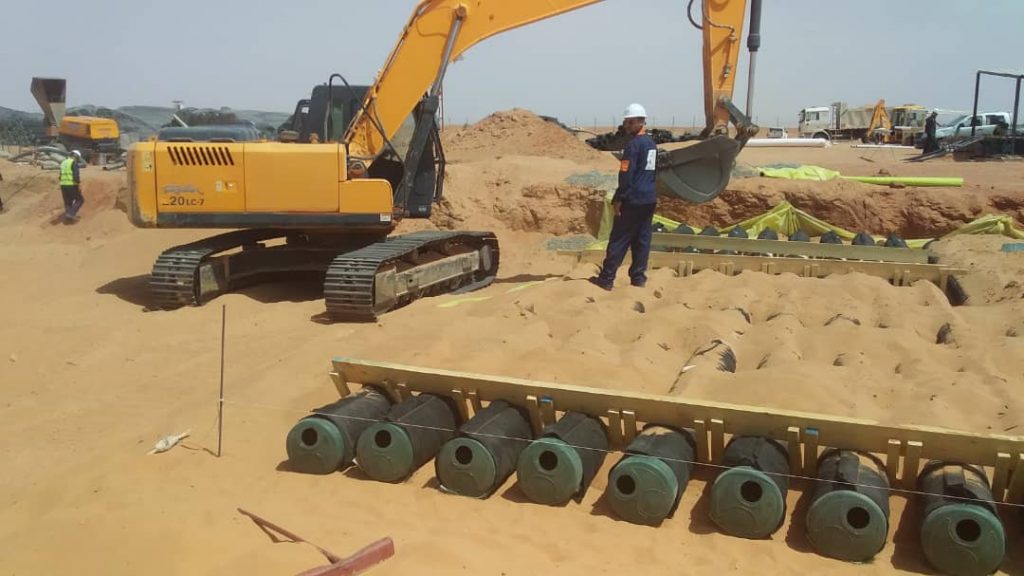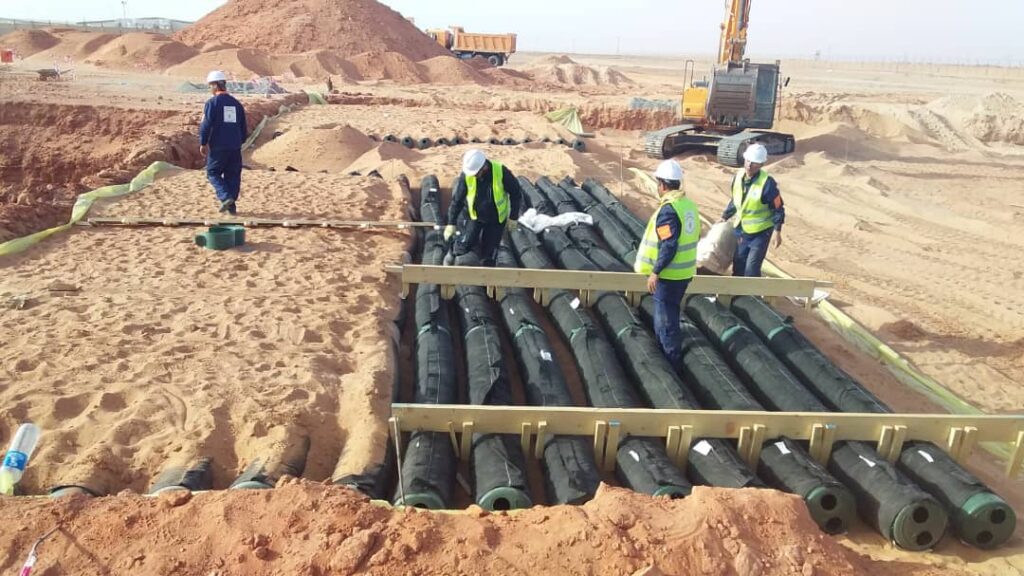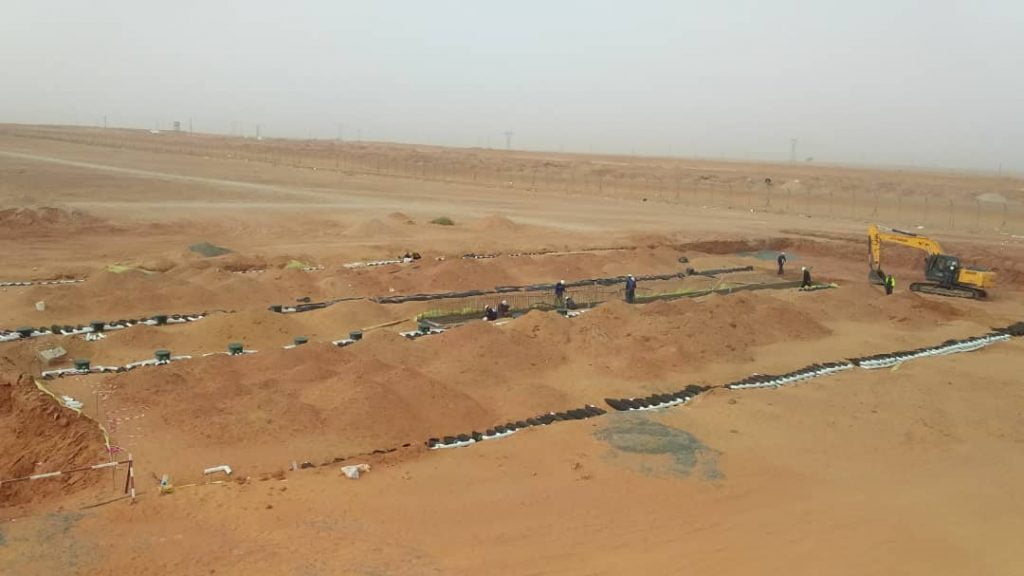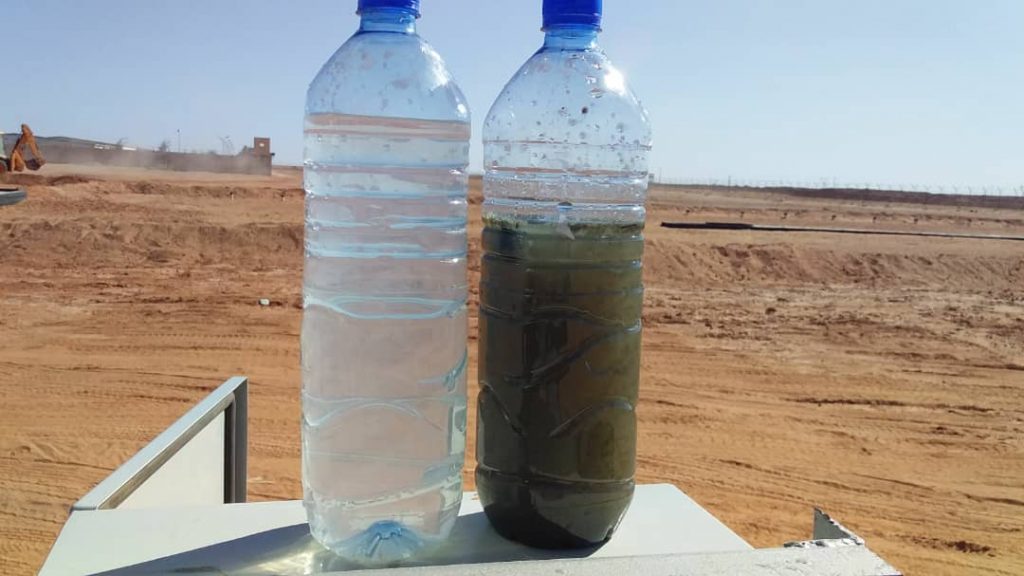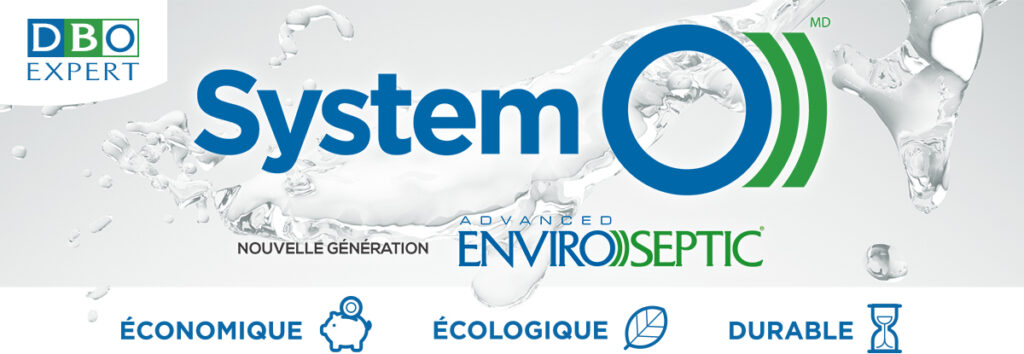Specifications of the base camp's wastewater treatment needs
| Year | 2019 | |
| Country | Canada | |
| Distributor | ENVIROSTEP SARL | |
| Treatment Capacity | 170,000 L/day | |
| Soil Analysis | Impermeable | |
| System Surface Area | 2,066 m2 | |
| Treatment results available upon request. | ||
BACKGROUND
The Reggane North Development Project is a wastewater treatment
system installed in the Sahara Desert in Algeria. The system was designed to treat and recover the wastewater from the main base camp for the GRN REGGANE Group at SALI.
The treated water is recovered and held in a holding tank to be used to irrigate green spaces in the base camp. With no moving parts or filter media to replace, the watertight System O)) was the most cost-effective, long lasting, and efficient option.
- Primary treatment
The System O)) is preceded by a primary treatment. Raw wastewater leaving the camp is collected in septic tank with an effective volume of 250,000 L. Inside the septic tank, the wastewater separates into layers as the fats float to the top and the solids sink to the bottom of the tank.
Distribution
The effluent is pumped to the main septic tank, then is gravity-fed into 10 different cells. Each cell is fed by a distribution box that distributes the wastewater evenly into five other distribution boxes.
These distribution boxes each feed six rows of four Advanced
Enviro))Septic pipes. The proper functioning of the System O)) depends on a uniform distribution of wastewater between the
Advanced Enviro))Septic pipe rows. The treated effluent of the system is recovered and collected in a 150,000 L holding tank to be reused.
- SECONDARY TREATMENT
- RECOVERY OF TREATED WATER
- ECONOMIC ADVANTAGES
By using a System O)), the client saves money in the long term. A System O)) costs roughly the same as a conventional system, but has
a lifespan of over 30 years. Conventional installations can start to fail after 15 years even if they are treated well.
The System O)) doesn’t require maintenance and there isn’t any filter media to replace or parts that can break. This system allows the client to treat the massive quantity of wastewater that is produced everyday without having to worry that something will break.
By using a watertight System O)), the client saves money on irrigation. Irrigating one hectare of green space with one inch of water costs roughly US$17.
- ENVIRONMENTAL ADVANTAGES
In the Sahara desert, potable water is a limited and very important commodity. By installing a watertight System O)) with a recovery
zone, the company is helping protect this valuable resource by reusing the treated water for irrigation.
Only 13% of the wastewater that is collected in Morcocco is treated. There is a scarcity of drinking water in Morocco and the water available is often contaminated with untreated wastewater.
The treated water leaving System O)) has, on average:
- 110.5 times less CBOD5,
- 7.3 times less TSS, and
- 49.6 times less fecal coliform
than a conventional installation.
The treatment process of a conventional installation occurs in the native soil, while System O)) treats the wastewater within the system, protecting the native soil and the local water supply.
